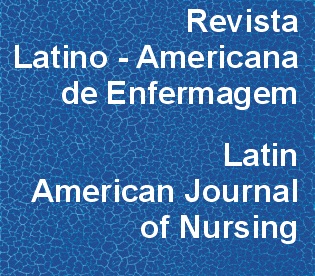Fatores de risco para óbito em pacientes com eventos adversos não infecciosos
DOI:
https://doi.org/10.1590/1518-8345.2069.3001Palavras-chave:
Cuidados Críticos, Unidades de Terapia Intensiva, Fatores de Risco, Mortalidade, Segurança do Paciente, EnfermagemResumo
Objetivo: identificar os fatores de risco para óbito em pacientes que sofreram eventos adversos não infecciosos. Método: estudo de coorte retrospectivo com pacientes que sofreram Eventos Adversos (EA) não infecciosos em uma Unidade de Terapia Intensiva. Foi utilizado o método de Kaplan Meier para estimar a probabilidade condicional do óbito (teste log-rank 95%) e os fatores de risco associados ao óbito por meio da regressão de Cox. Resultados: pacientes acima de 50 anos apresentaram um risco de 1,57 vezes, indivíduos acometidos por infecção/sepse apresentaram quase 3 vezes o risco. Os pacientes com Simplified Acute Physiology Score III (SAPS3) superior a 60 pontos tiveram 4 vezes maior risco, enquanto os que possuíam escala de Charlson superior a 1 ponto apresentaram, aproximadamente, 2 vezes maior risco. A variável número de eventos adversos se mostrou como fator de proteção reduzindo o risco de óbito em até 78%. Conclusão: pacientes que sofreram evento adverso e que têm mais de 50 anos de idade, com infecção/sepse, maior gravidade, ou seja, SAPS 3>;30 e Charlson >;1, apresentaram maior risco de óbito, no entanto o maior número de EA não contribuiu para o aumento do risco de óbito.Downloads
Os dados de download ainda não estão disponíveis.
Downloads
Publicado
2018-01-01
Edição
Seção
Artigos Originais
Licença
Os direitos autorais são de propriedade exclusiva da revista, transferidos por meio da Declaração de Transferência de Direitos Autorais (presente no Formulário Individual de Declarações) assinada pelos autores. Para a utilização dos artigos, a RLAE adota a Licença Creative Commons, CC BY-NC Atribuição não comercial (resumo ou código completo da licença). Com essa licença é permitido acessar, baixar (download), copiar, imprimir, compartilhar, reutilizar e distribuir os artigos, desde que para uso não comercial e com a citação da fonte, conferindo os devidos créditos autorais a Revista Latino-Americana de Enfermagem. Nesses casos, nenhuma permissão é necessária por parte dos autores ou dos editores.Como Citar
Gadelha, G. O., Paixão, H. C. da S., Prado, P. R. do, Viana, R. A. P. P., & Amaral, T. L. M. (2018). Fatores de risco para óbito em pacientes com eventos adversos não infecciosos. Revista Latino-Americana De Enfermagem, 26, e3001. https://doi.org/10.1590/1518-8345.2069.3001



